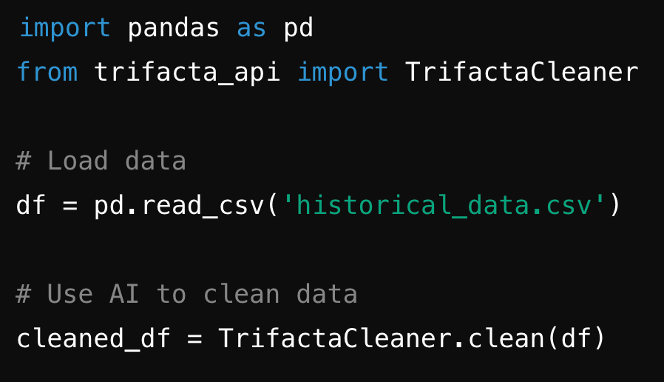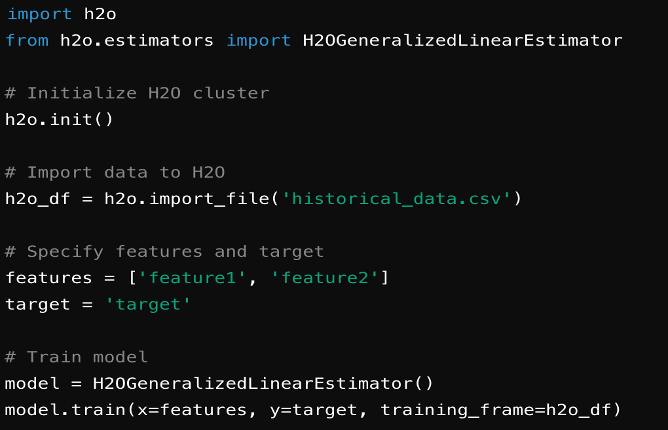AI Unleashed: Forecasting Trends and Future Predictions
Time Travelers: Lessons from Historical Trends in Predictive Analysis with AI
Have you ever wondered what it would be like to travel back in time and witness the very first trends that have shaped societies? Understanding these historical trends is not merely an exercise in nostalgia; rather, it provides invaluable insights into consumer behaviour, allowing businesses to anticipate future market shifts. With the integration of AI, the power of trend analysis has reached new heights.
In today's fast-paced world, where trends can change overnight, examining the roots of consumer behaviour reveals that while technology and styles may evolve, human motivations often remain constant. By leveraging predictive analysis alongside AI-enhanced historical insights, businesses can craft strategies that resonate with modern consumers.

The Importance of Understanding Historical Trends
- Identifying Patterns: Many consumer behaviours tend to be cyclical. For instance, the resurgence of Y2K fashion in 2023 mirrors styles from the early 2000s. AI can analyse vast datasets to identify these patterns more quickly and accurately, helping brands position themselves effectively.
- Cultural Context: Trends are influenced by social and economic conditions. In 2023, the rise of remote work has shifted consumer preferences toward home office equipment and wellness products. AI-driven sentiment analysis can process social media and review data to gauge consumer feelings about these changes.
- Predictive Analysis: By analysing past data, businesses can forecast future trends. AI algorithms can sift through historical sales data to predict future consumer preferences, making them reliable and timely.
Methodologies for Analysing Historical Trends and Predictive Analysis with AI
- Data Collection
- Identify Data Sources:
- Historical Sales Data: Understanding past sales patterns helps in predicting future trends.
- Social Media Trends: Platforms like TikTok and Instagram show real-time insights into consumer preferences, especially among Gen Z. AI tools like Brandwatch or Crimson Hexagon can analyse this data for deeper insights.
- Market Research Reports: Companies like Nielsen and Statista provide comprehensive analyses of current industry trends, which AI can help synthesize.
- Economic Indicators: In 2023, data such as inflation rates can influence purchasing behaviour; AI can track and correlate these indicators with consumer trends.
- Identify Data Sources:
- Data Cleaning
- AI tools automate the data cleaning process, ensuring that datasets are accurate and ready for analysis without requiring extensive manual intervention.
- AI Tool Example: Trifacta is a data preparation tool that uses machine learning to enhance data cleaning processes.
Example Code Snippet (Python with Pandas and AI-powered libraries):

- Trend Analysis
Techniques:
- Time Series Analysis: AI enhances time series forecasting, using advanced algorithms like Facebook’s Prophet that learn from past trends and adjust predictions based on new data.
- Seasonal Decomposition: AI automates the identification of seasonal patterns in data.
Example Code Snippet (Using AI for Time Series Analysis):
- Predictive Analysis
- AI models can use complex algorithms, such as deep learning, to improve the accuracy of predictive analysis.
- AI Tool Example: H2O.ai is a powerful open-source platform, is used for building machine learning models.
Example Code Snippet (Python with Pandas and AI-powered libraries):

- Visualisation
- AI enhances data visualisation by automating the creation of insightful graphics that highlight key trends and predictions.
- AI Tool Example: Tableau has AI features like Ask Data, which allows users to create visualisations through natural language queries.
Example Code Snippet (Python with Pandas and AI-powered libraries):

Comparison of Technologies and Approaches
| Technology/Tool | Description | Pros | Cons |
|---|---|---|---|
| AI-Powered Tools | Utilize machine learning and deep learning for analysis |
|
|
| Brandwatch / Crimson Hexagon | Social media analytics tools |
|
|
| H2O.ai | Machine learning platform for building models |
|
|
| Tableau | Business intelligence tool |
|
|
"Navigating the Hurdles: Key Challenges in Trend and Predictive Analysis"
- Data Quality: Inaccurate, incomplete, or outdated data may lead to flawed insights and predictions, making it essential to ensure high-quality data collection and management.
- Complexity of Algorithms: Developing and fine-tuning predictive models can be complex, requiring expertise in statistics, machine learning, and domain knowledge. This complexity can hinder effective implementation.
- Integration Issues: Integrating predictive analytics tools with existing systems can be challenging, often requiring significant time and resources to ensure compatibility and seamless data flow.
- Changing Consumer Behaviour: Rapid shifts in consumer preferences and market dynamics can render predictive models obsolete. Keeping models updated in response to these changes is crucial yet difficult.
- Interpretation of Results: Even with accurate predictions, translating data insights into actionable strategies can be challenging, especially for decision-makers without a strong data background.
- Privacy Concerns: The collection and analysis of consumer data raise privacy issues, requiring businesses to navigate regulations and maintain consumer trust while leveraging predictive analytics.
- Overfitting: Predictive models may become too tailored to historical data, failing to generalize effectively to new data. Balancing model complexity and generalizability is a constant challenge.
- Resource Intensive: Implementing advanced predictive analytics often requires significant investments in technology, talent, and training, which can be a barrier for smaller organizations.
Final Thoughts and Recommendations
Understanding historical trends and employing predictive analysis, particularly with AI, are essential for businesses aiming to navigate today's complex market landscape. Here are a few recommendations:
- Integrate AI: Consider leveraging AI tools to enhance data analysis and predictive modelling. The ability of AI to process large datasets can provide deeper insights and more accurate forecasts.
- Choose the Right Tools: Evaluate the size and complexity of your data alongside your team's expertise when selecting tools. For large datasets, AI-driven tools can improve performance and scalability.
- Combine Approaches: Utilize both historical analysis and AI-enhanced predictive modelling to create a robust understanding of market dynamics.
- Stay Updated: Technology and consumer behaviour are constantly evolving. Regularly adapt your methodologies and tools to stay competitive, especially with advancements in AI.
References
- Brandwatch: https://www.brandwatch.com
- Crimson Hexagon: https://www.crimsonhexagon.com
- Trifacta: https://www.trifacta.com
- H2O.ai: https://www.h2o.ai
- Facebook Prophet: https://facebook.github.io/prophet
- Tableau: https://www.tableau.com
- Statista: https://www.statista.com
- Nielsen: https://www.nielsen.com

Shalu Kumari | RIEPL
November 05, 2024

